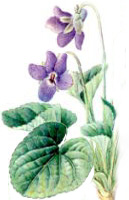
Chard seedlings
Have you ever done this; you read about an interesting vegetable, let's call it a visulaumblema, and since it seems to be easy to grow, looks nice and can be cooked in a number of ways you buy seeds and grow an entire allotment full. The only thing is that when harvest arrives you realise that you don't really like the only recipe you've got, and the rest is only vague hints. So you trow your magnificent visulaumblema on the compost and grit your teeth over the waste. (I might add that most of my visulaumblemas end up in the freezer. Not much better.)
This has happened to me a few times, and many more times have I refrained from growing things because I suspect they may end up visulaumblemas. To help others avoid this in their indoor vegetable gardening career I thought I'd give some cooking manuals for the best indoor vegetables. Let's start with the basics; chard.
How the heck do I cook chard?
Chard is the first vegetable to be "used as spinach" - the two plants are sisters in the kitchen and whatever you can do to spinach you can do to chard too. Chard has an additional feature in its thick stems which makes it even more useful. The rule ofd thumb is to cut out the stems from the leaves and parboil them separately since they require different time in the water.
The leaves are good for
-gravy, make a white gravy and add the leaves parboiled and finely cut. Good as a side dish for fish, meat and baked potatoes.
-parboil in salted water, add spices and use as stuffing
-filling in pie (see above)
-cutting up and add as an ingredient in stews and casseroles
-mix finely and make a green soup (I'll give you a recipe for this next week)
-tender leaves can be used raw in sallads
The stems should always be parboiled in salt water and
-eaten hot like asparagus
-saved (frozen for ex.) and used as mild tasting filling vegetable in stuffing
Spices that works well with chard
-salt (this is a vegetable that needs some extra salt to taste good)
-garlic
-black pepper
-nutmeg
-sambal oelek
-soy sauce
I'm convinced there are more ways to cook chard, but this gives you some pointers to start with. When chard is grown indoors it developes small leaves, and that' why I only mention here that the leaves can be used as wrapping for dolmas (yum).
That's about it for today. Chard is easy to grow, so start some seeds right away to get some chans to experiment! :) Next week I'll give you some old fashioned recipes.





1 comment:
It is a great plant, but it is a bit "chlorophylly". You can mellow it out in cream sauces, pan frying, or by boosting the content of breads (which also helps keep moisture). It is pretty versatile and a great veggie in the garden.
Also, I added you to my blogroll.
Post a Comment